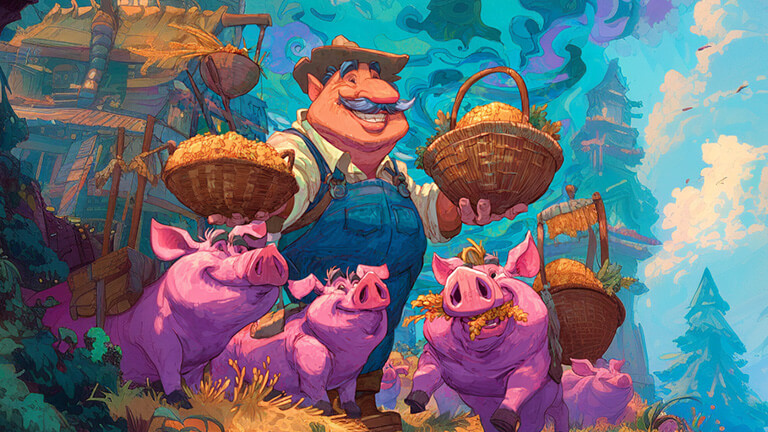Sub-optimal (partial) diet for pigs#

If on any given day an animal receives less feed than required for an optimal diet, the diet is considered suboptimal (partial). This leads to the following consequences:
- The rate of weight gain decreases.
- Manure production is decreasing.
- Athletic performance is deteriorating.
- The period of preparation for mating increases.
- The gestation period increases.
Determining the degree of deviations#
All deviations are calculated proportionally to the share of feed actually received relative to the optimal diet.
Table. The required amounts of feed for an optimal pig diet.
| Age, days | Types of feed |
|---|---|
| 1–30 | 7 |
| 31+ | 6 |
Formulas for suboptimal diets#
Calculation of weight gain, manure production and athletic performance:
\( N = Nо - A/B \)Where:
| Variable | Explanation |
|---|---|
| \( Nо \) | Value for optimal diet. |
| \( A \) | The types of feed actually obtained. |
| \( B \) | Necessary types of feed. |
Calculation of the gestation period and preparation for mating:
\( N = Nо - B/A \)Variables are used in a similar way.
Calculation examples#
Situation 1#
A young boar (1–30 days) received 5 of 7 feed types on the 30th day. Optimal weight gain was 6 kg, manure 8 kg, and agility 5000.
- Weight gain: \( 6 - 5/7 ≈ 4.28 kg \).
- Manure: \( 8 - 5/7 ≈ 5.71 kg \).
- Dexterity: \( 5000 - 5/7 ≈ 3571 \).
Situation 2#
A sow (31–350 days) receives 3.5 of 6 feed types. Optimum: 0.5 kg gain, 8 kg manure, 10 days of preparation for mating, 35 days of gestation.
- Weight gain: \( 0.5 - 3.5/6 ≈ 0.29 kg \).
- Manure: \( 8 - 3.5/6 ≈ 4.66 kg \).
- Preparation for mating: \( 10 - 6/3.5 ≈ 17.14 days \).
- Gestation period: \( 35 - 6/3.5 ≈ 60 days \).
Situation 3#
The sow (31–350 days) was not fed any type of feed. The optimal gain was 0.5 kg.
- Weight loss: \( 0.5 - 1/3 ≈ 0.16 kg \).
- Manure: Not produced.
- Gestation and preparation for mating: Stops.